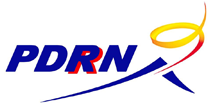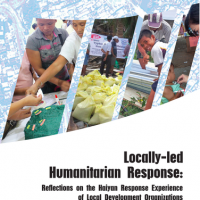a. Reduced risks to life, livelihood, health and properties
This is in response to the issue of global warming. The goal of the organization is to attain, or at least contribute, towards a “balance nature,” that is through increased community awareness regarding risk and disaster response and management. PDRRN is aims to lessen the impact of hazards in vulnerable sites; lessen the risk and hazard to life, livelihood, health and properties.
Research and study of the effects of hazards (and climatic changes) in particular program areas and information dissemination are the identified interventions through greater advocacy and lobbying efforts.
b. Local Government Units (LGUs) are equipped with skills in Disaster Risk Reduction (DRR) planning and integrating; institutionalizing DRR plans to development plans
In response to the issue of ineffective governance PDRRN aims to increase capabilities of LGUs to craft development plans that incorporate Risk Reduction. PDRRN sees a pivotal role in convincing, influencing, facilitating groups and networks for active participation in governance. Heightened advocacy and networking are the planned efforts to achieve this goal. An indicator for success is the institutionalization of standards and/or the adoption of SPHERE in Risk Reduction planning.
c. Stakeholders are influenced and convinced to participate in governance; increased consciousness of stakeholders on good governance.
This is also in response to the issue of ineffective governance. Strategy is through advocacy and networking. Indicators for effectiveness are: the increased consciousness of being stakeholders among groups and networks, and the increased involvement of stakeholders in governance.
d. Increased income of vulnerable communities through sustainable livelihood, savings and safety nets.
In response to the issue of food insecurity and low productivity of communities, specifically a) increase income of impoverished families; b) management skills for livelihood; c) sustainability of livelihood; d) create savings, safety nets
PDRRN aims to achieve this goal through its microfinance program (anticipating better programmatic implementation) and the development of alternative livelihood projects, both for farming and coastal communities. The creation of savings and sustained livelihood of the communities will be indicative of success.
e. Responded appropriately and timely to high-impact disasters.
PDRRN wants to increase its capacity in implementing standards in Emergency Responses by being able to “augment” government services (by filling in the gaps in the government’s emergency assistance); by being to mount timely responses; and by initiating appropriate responses that are according to standard (SPHERE). It has establish its capacity to response to small-scale to medium scale humanitarian response, however, PDRRN will continue to streamline and further improve the response.
f. Enhanced organizational capabilities of PDRRN by developing capable second-liners and learning new skills, building sustainable resources of the institution.
In providing services, PDRRN is also committed to strengthen its structure, enhance staff capacity, improve its manual of operations and build sustainable resources toward organizational development.

